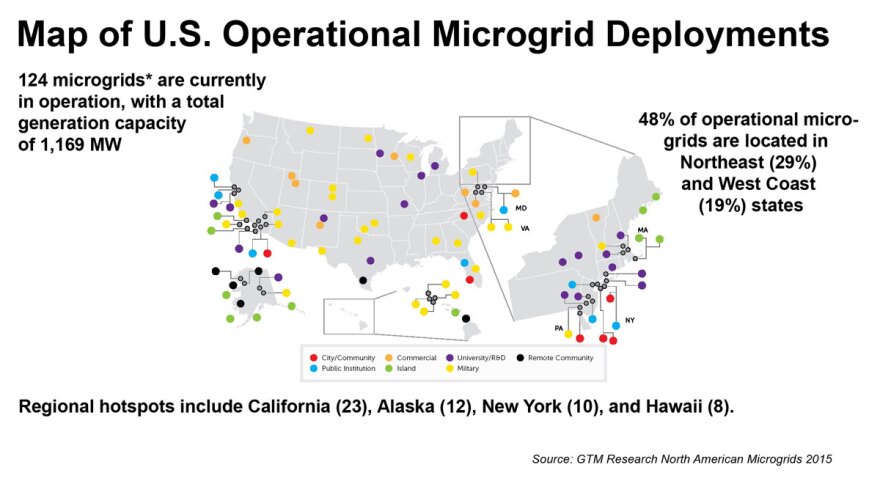Major power outages have doubled every five years since 2000, which is something the U.S. military is taking seriously. They're helping to lead the way in the development of smaller and more secure grids – known as microgrids.
At Fort Carson Army Base near Colorado Springs, their grid project -- known as the Smart Power Infrastructure Demonstration for Energy Reliability and Security, or SPIDERS -- helps keep the lights on when the powers goes out, acts as a technology incubator and helps increase the base's energy security. This is the military after all.
Ramon Crockett, a supply specialist at Fort Carson, describes his team as the Home Depot of the 31,000-person post. He spends much of his day trucking whatever people need. It's a quiet job, owing to the whispering electric engine in his delivery truck.
"Yeah, it's nice, all the guys say I sneak up on 'em," Crockett laughed.
His is one of a small fleet of electric vehicles driving around Fort Carson, carrying refrigerated goods, weapons and even troops heading out to train. The trucks make up an important piece of the base's microgrid project.
"It's all about … what can we do in the event of a catastrophic outage," said Bill Waugaman, who leads energy security for U.S. Northern Command – the military's homeland defense arm.
Waugaman has overseen SPIDERS projects at Fort Carson and at bases in Hawaii. The bases are still hooked up to the same electricity grid we all use. If there's a blackout on the main system, SPIDERS allows electricity to keep flowing to the bases' most important buildings, thanks to power sources on site.
At Fort Carson, a field of solar panels and diesel generators provide power that can be used immediately, or stored in the batteries of the base's electric vehicles for later use.

Microgrids are not new, GTM Research counts 124 in the U.S., often at hospitals, universities and research facilities -- as well as military bases. Usually, though, they rely solely on diesel generators.
During Superstorm Sandy, diesel shortages wracked the East Coast. Waugaman said generators failed in multiple hospitals from overuse at that time. The alternate combination of renewables and batteries found at Fort Carson could provide a prescription for a more reliable microgrid.
Military bases provide an important testing ground for such a suite of technologies, Waugaman explained.
"We play war," he said. "So, on the military installation we … can basically attack our infrastructure from a cyber point of view."
These real world tests are something hospitals or Wall Street wouldn't be willing to do, so pilot projects like SPIDERS could eventually drive markets in the private sector. One firm, GTM Research predicts, the market for microgrids will grow nearly 270 percent by 2020.
One example already is in the works, due north of Fort Carson in Northern Colorado, near U.S. 85 between Greeley and the Wyoming state line. Real estate investor Craig Harrison is developing what he calls the "world's largest planned microgrid" in Weld County. This square mile Niobrara Energy Park sits at the intersection of major electric transmission lines, natural gas pipelines, and one of the largest fiber optic hubs in the country.
The plan? Harrison wants to pool those resources and combine them with renewables on site to lure in major technology companies like Apple or Google to build data centers there. He thinks the project could be worth $10 billion one day.
Inside Energy is a public media collaboration, based in Colorado, Wyoming and North Dakota, focusing on the energy industry and its impacts.







